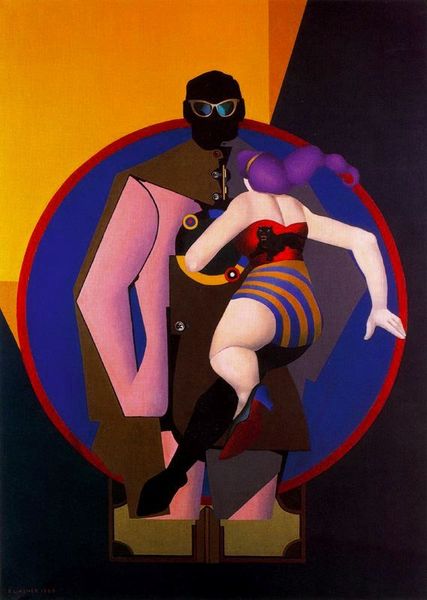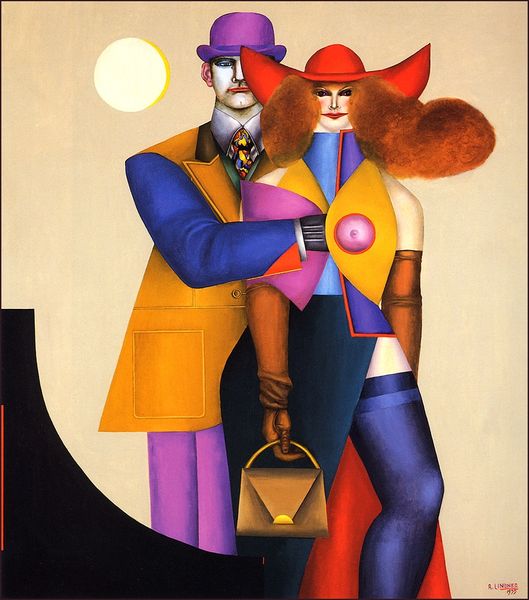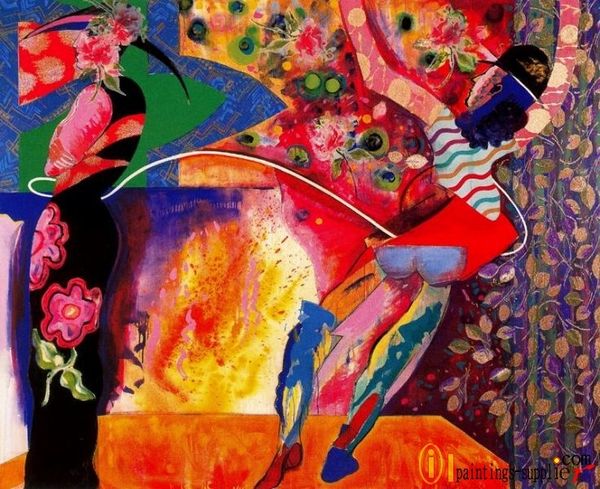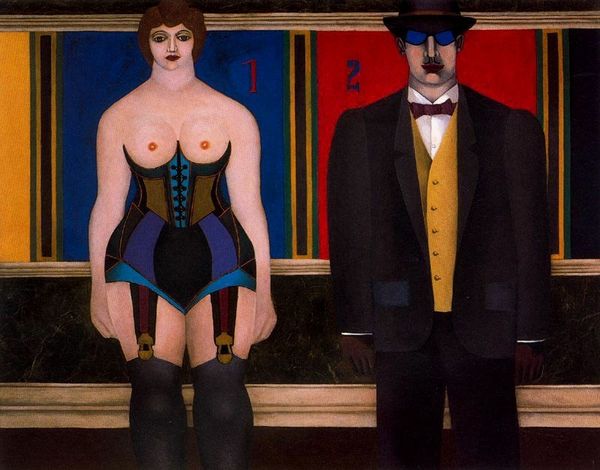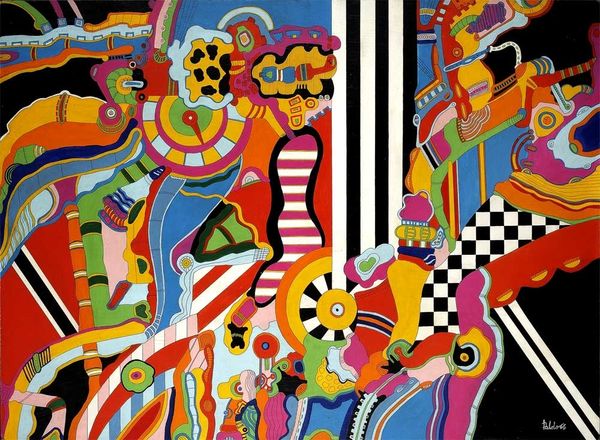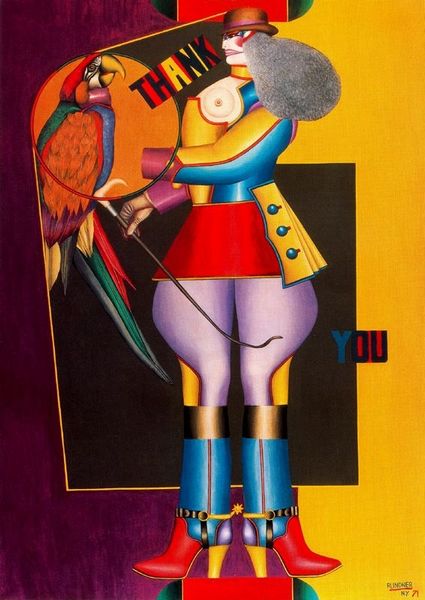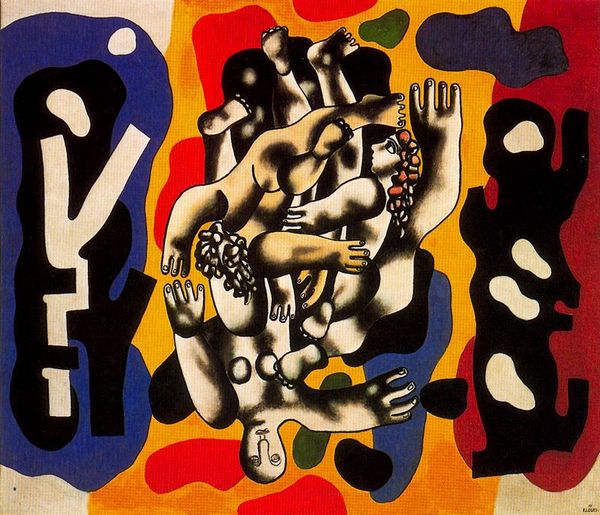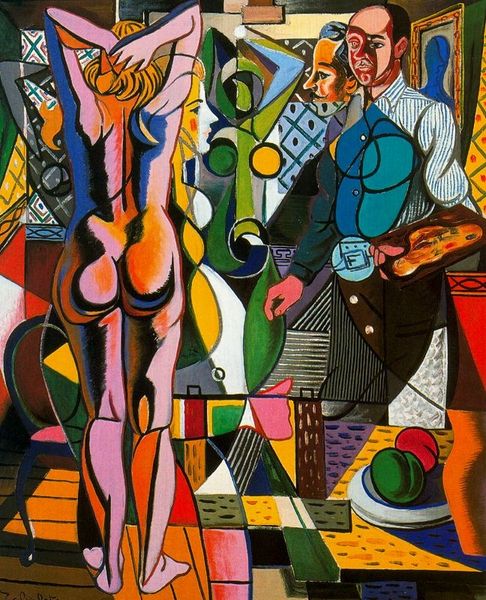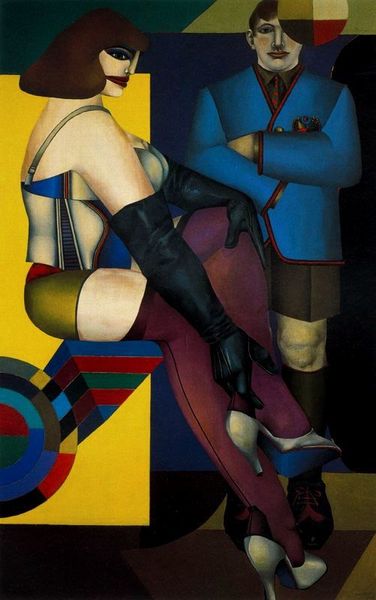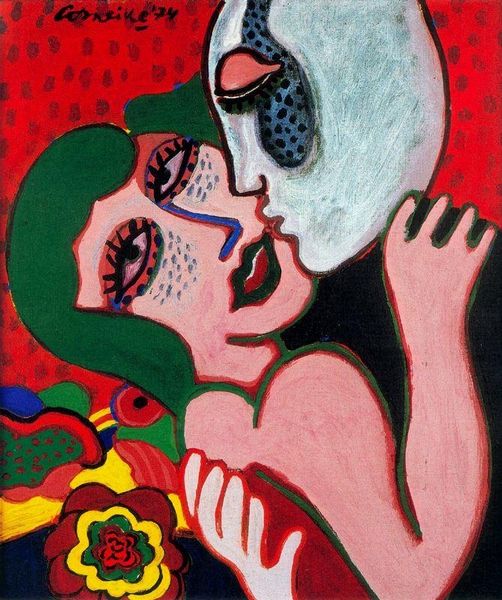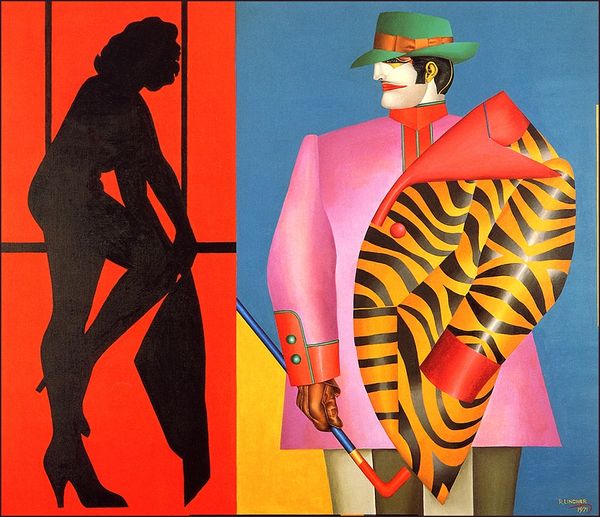
Dimensions: 200 x 180 cm
Copyright: Richard Lindner,Fair Use
Curator: Richard Lindner’s “The Ace of Clubs,” completed in 1973. It's quite striking, a true representation of his pop-art sensibility. Editor: It has a peculiar tension. The materials and finish give the figures a hyper-artificial sheen, a smoothness that denies any human touch. They’re unsettlingly manufactured. Curator: Lindner masterfully blends the imagery of power, allure, and artificiality. Notice the deliberate use of card imagery - the Ace, a symbol of potential and high value, subtly interplays with themes of chance and strategy, particularly potent within its erotic overtones. Editor: Yes, the artifice is crucial here. These figures aren't flesh and blood; they're constructed identities. The materials -- acrylic on canvas, chosen to reject traditional oil paints-- enhance that feeling. Think of mass production techniques seeping into fine art, deliberately erasing any trace of the artist's hand. Curator: I see these characters, especially their exaggerated features, as playing on certain archetypes - perhaps the cool detached gentleman, the alluring woman. The composition invokes familiar power dynamics through highly symbolic forms. What do you make of their masked appearances? Editor: The masking could very well allude to the masks we wear in a capitalist society—commodifying everything, even identity. We see reflections of that social theater rendered vividly. And of course, the materials themselves become signifiers: synthetic fabrics, bold primary colors - the very fabric of modern consumer culture. Curator: And yet beneath the artifice, don’t you detect a longing for genuine connection? Their gaze, despite its deliberate construction, feels vulnerable. Maybe Lindner suggests that these symbols – wealth, status – offer fleeting meaning, insufficient as lasting sources of identity. Editor: Perhaps you're right. Though I tend to focus more on the overt commentary about societal construction, the cold, precise execution. The lasting takeaway is the triumph of the manufactured object, the seductive appeal of artifice in an era of mass production. Curator: It has certainly given me food for thought about the continuing role of symbols in constructing narratives about power and desire. Editor: Yes, and I find myself pondering the enduring fascination of art's dialogue with the means and matter of its making.
Comments
No comments
Be the first to comment and join the conversation on the ultimate creative platform.
